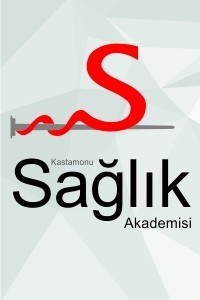STAJYER DOKTORLARA TIP EĞİTİMİ DİKEY ENTEGRASYONU KAPSAMINDA VERİLEN TIBBİ MİKROBİYOLOJİ EĞİTİMİNİN DEĞERLENDİRİLMESİ
Tıbbi Mikrobiyoloji Eğitimi, Dikey Entegrasyon, Tıp Eğitimi
Evaluation Of Medical Microbiology Education Given To Trainee Doctors Within Vertical Integration Of Medical Education
___
- 1- Akram, A., Rizwan, F., Sattar, K., Hadi, J. I. S. ve Meo S. A. (2018). An approach for developing integrated undergraduate medical curriculum. Pak J Med Sci, 34(4), 804-810.
- 2- Albanese, M. (2009). Life is tough for curriculum researehers. Med Educ, 43(3), 199-201.
- 3- Albano, M. G., Cavallo, F., Hoogenboom, R., Magni, F., Majoor, G., Manenti, F., Schuwirth, L., Stiegler, I. ve van der Vleuten, C. (1996) An international comparison of knowledge levels of medical students: the Maastricht Progress Test. Med Educ, 30(4), 239–245.
- 4- Brynhildsen, J., Dahle, L. O., Behrbohm Fallsberg, M., Rundquist, I. ve Hammar, M. (2002). Attitudes among students and teacher on vertical integration between clinical medicine and basic science within a problem- based undergraduate medical curriculum. Med Teach, 24(3), 286-288.
- 5- Cantillon, P. ve MacDermott M. (2008). Does responsibility drive learning? Lessons from intern rotations in general practice. Med Teach, 30(3), 254-259.
- 6- Cristopher, D. F., Harte, K. ve George, C. F. (2002). The implementation of tomorrow’sdoctors. Med Educ, 36(3), 282- 288.
- 7- Cook, D. A. ve Beckman, T. J. (2010). Reflections on experimental research in medical education. Adv Health Sci Educ Theory Pract, 15(3), 455-464.
- 8- Fraser, S. W. ve Greenhalgh T. ( 2001). Coping with complexity educating for capability. BMJ 323(7316), 799-803.
- 9- Goldacre, M. M,, Lambert, T., Evans, J. ve Turner G. (2003). Pre-registration house officers'views on whether their experience at medical school prepared them well for their jobs; national questionnaire survey. BMJ , 326(7397), 1011-1012.
- 10- Jones, R., Higgs, R., Angelis, C. ve Prideaux D. (2001). Changing face of medical curricula. Lancet, 357(9257), 699-703.
- 11- Kerdijk, W., Snoek, S. W., Van Hell, E. A. ve Cohen-Schotanus, J. (2013). The effect of implementing undergraduate competency-based medical education onstudents’ knowledge acquisition, clinical performance and perceived preparedness for practice: a comparative study. BMC Med Educ, 13(1), 76.
- 12- Sing, A. , Katyal, R., Chandra, S., Joshi, S. H. ve Singh, K. (2017). Study of impact of vertical infegration in medical education in a medical college of India. IJCMPH, 4(9), 3328-3331.
- 13- Solakoğlu, Z. ve Darendeliler, F. (2013). Daha İyi Tıp Eğitimi İçin Tartışılan Güncel Görüşler. Yükseköğretim Dergisi, 3(3), 165-168.
- 14- Vidic, B., Weitlauf MH. Horizontal and vertical integration of academic disciplines in the medical school curriculum. Clin. Anat. 2002; 15(3): 233-235.
- 15- Watmough S, Cherry, M. S. ve O'Sulivan, H. A. (2012). Comparison of sell-perceived competencies of traditional and refomed curriculum graduates 6 years after graduation . Med Teach. 34(7), 562-568.
- 16- Wijnen-Meijer, M., ten-Cate, O. T., Van der Schaaf, M. ve Borleffs, J. C. (2010). Vertical integrationin in medical school: effect on the transition to postgraduate training. Med Educ, 44(3), 272-279.
- 17- Wijnen-Meijer, M., Olle ten, C., van der Schaaf, M., Burgers, C., Borleffs, J. ve Harendza, S. (2015). Vertically intergrated medical education a the readiness for practice of graduates. BMC Med Educ, 15(1), 229.
- Yayın Aralığı: Yılda 3 Sayı
- Başlangıç: 2016
- Yayıncı: Esra DEMİRARSLAN
FARKLI TARHANA TÜRLERİNİN SAĞLIK YÖNÜNDEN DEĞERLENDİRİLMESİNE YÖNELİK BİR ÇALIŞMA
Özlem ÖZER ALTUNDAĞ, Emre Batuhan KENGER, Efe Kaan ULU
YOĞUN BAKIM ÜNİTELERİNDE OLUŞAN HASTANE ENFEKSİYONLARI BULUNMA ORANLARININ KARŞILAŞTIRILMASI
Sağlık Çalışanlarında El Hijyeni İnancı ve Uygulamalarının Değerlendirilmesi
